Doctors use X-ray machines, ultrasounds, or MRIs to better diagnose what is going on inside us. Did you know that with a diagnostic device you can do something similar to your Volkswagen?
With a diagnostic device, you can read out OBD2 codes and determine the “health” of your VW. But which tool should you get?
There are basically three types of diagnostic devices for your Volkswagen on the market. There are external diagnostic devices, software options for your laptop, and diagnostic apps, with the latter being the easiest to use and usually the cheapest.
The Carly app falls into that category and has dominated the market for several years. The full version costs between €21 and €80 per year. Additionally, you need the Carly scanner which is a one-time cost of €59.90 (plus shipping).
In this article, we will introduce you to the three types of diagnostic devices available for Volkswagen. In addition, we’ll discuss how the devices work and give you important background information on vehicle diagnosis.
Control Units
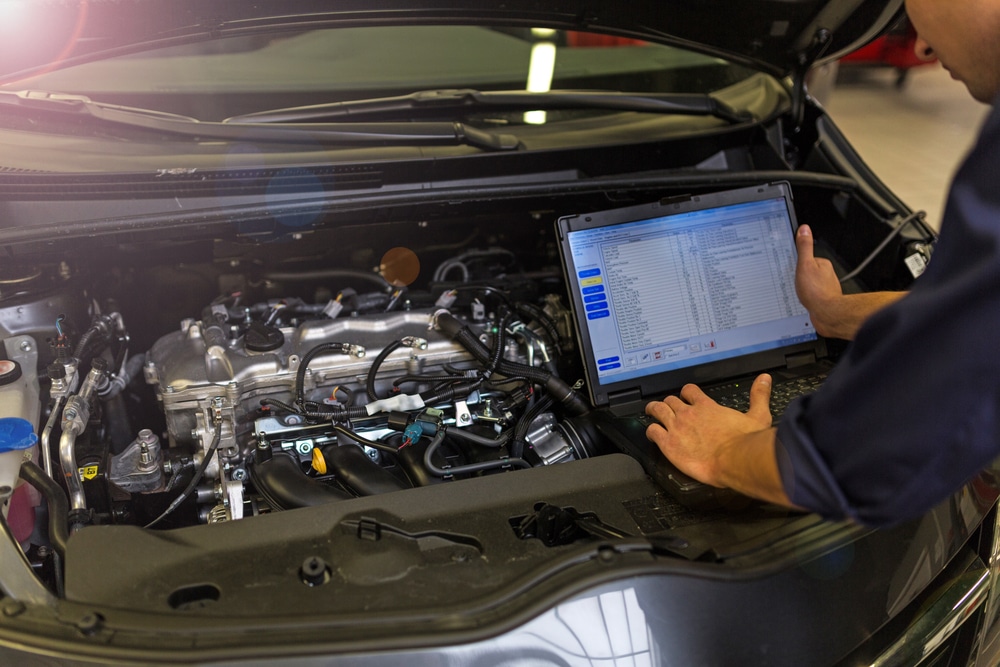
In modern vehicles, control units regulate all systems. Twenty years ago, cars had maybe one or two of them, but today there are up to 100. Each ECU is responsible for a specific system. So there is a control unit for the braking system, one for the lighting system, one for the air-conditioning system, etc.
Each control unit has a range of values that are considered normal. If there are deviations, an error code is generated. In most cases, the control unit can correct the error and everything runs normally again.
However, in other cases major errors can occur, including errors that affect driving safety. In this case a corresponding warning light, signal tone, or even a message on the screen display is activated to alert the driver.
How does it work?
So how exactly does this all work? Basically, a network several kilometers long is installed in the vehicle to connect all control units with the systems and the OBD2 interface. These so-called CAN buses (Controller Area Network) bring the data packets from one point to the next.
You can think of it as public transportation. Buses constantly travel through the network, picking up data packets at stops and transporting them to another stop. The requests for data are processed by the buses one by one. However, the whole thing happens so fast that you don’t notice it. The buses can travel on copper or fiber optic roads (roads = lines).
OBD2 Interface and Network
The OBD2 interface is necessary for communication to the outside, as it’s used to connect the vehicle to the diagnostic device. The adapter translates the language of the diagnostic tool into the language of the vehicle.
You plug the adapter into a socket you’ll find in the interior of the vehicle, which in turn is connected to the diagnostic tool by a cable (rarely), with Wi-Fi, or with BlueTooth (in the case of Carly with BLE — Bluetooth Low Energy).
Until the 1980s, each manufacturer had its own system, after which a uniform system was first created in the USA, the OBD standard.
The OBD2 system followed and that was introduced in Europe in 2001 for gasoline vehicles and from 2004 for diesel vehicles. The detailed specifications are laid out in the SAE J2012 standard and in ISO standard 15031-6.
In particular, the standardization process focused on the monitoring of exhaust-relevant data. The efficiency of the catalytic converter, the function of the lambda sensor, and combustion misfires was monitored.
It was not until somewhat later that it was realized that the interface was perfectly suited for all communication between the vehicle and external devices. Nowadays, OBD systems can:
- Constantly monitor all emission-related values
- Document significant increases in emissions
- Store errors that have occurred
- Readout and code general data
Is there an OBD3 diagnostic device for Volkswagen?
Do you know the surveillance state in George Orwell’s famous 1984? Well, the OBD3 systems being developed might seem a bit too close to that state for some.
As explained, the OBD standard was developed to keep an eye on emissions-related systems and thus protect the environment. Currently, if a problem is detected with the car, a warning light (or something similar) goes off, and the driver is free to decide whether and when to have the fault repaired.
If the next emissions test is not due for another two years, the driver could drive around with the increased emission values.
This might no longer be possible with OBD3. If an increased or faulty value is detected here, a corresponding message will be sent automatically (via Wi-Fi/satellite/SIM card) to the responsible authority. If the fault is not repaired within a certain period of time, a fine or other punishment might occur.
But many of you can breathe a sigh of relief … whether this standard will ever be introduced in Europe is highly questionable. Too many data protection issues stand in the way.
The ELM 327 chip
The ELM 327 chip is built into the adapter — and it’s the brain of the device. This chip can read the signals (CAN protocols) of the buses and translate them accordingly. The chip also supports high-speed communication between the individual components. Even though it does a lot, luckily it consumes very little power.
Important tip: Please only use quality adapters and refrain from super cheap ones. If it costs under €30 it is probably not worth purchasing. Cheap adapters are like bad interpreters or translation programs (and the ELM 327 is usually just a copy and not an original product from the manufacturer). They confuse words or twist the meaning of terms. This can cause serious problems in the vehicle.
Reading error codes on your Volkswagen
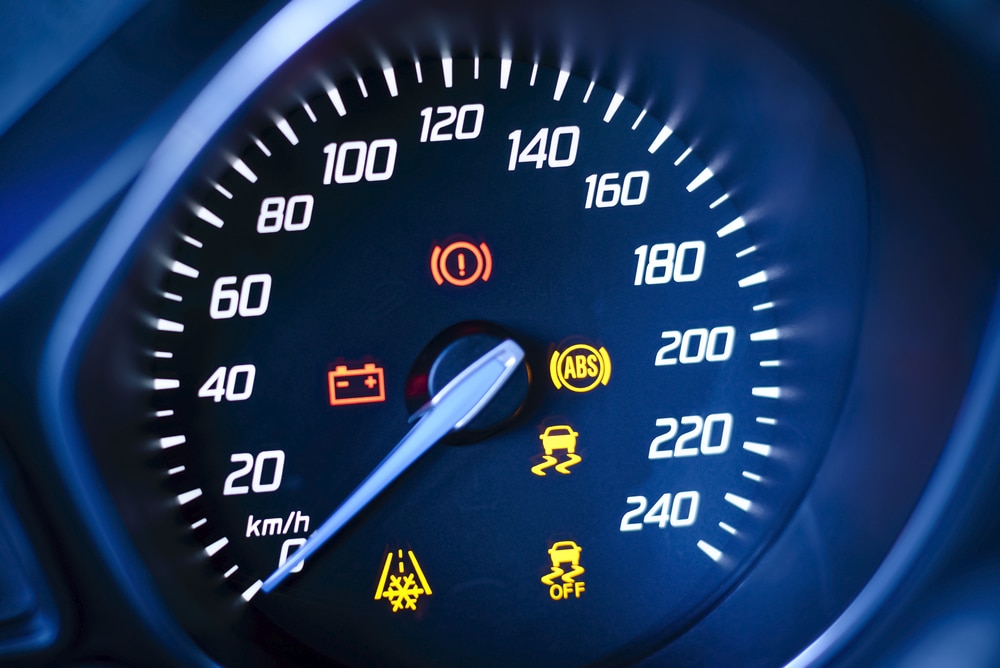
During a vehicle diagnosis, the error codes or DTCs (Diagnostic Trouble Codes) are readout. After fixing them, you can clear the fault codes.
All trouble codes have the same structure. They consist of 5 digits, are alphanumeric and a description is assigned to them. The largest group of error codes is also internationally standardized. A smaller part is manufacturer-specific. To be able to read these error codes, you should use a diagnostic device that is specialized for VW. The error codes are structured as follows:
The first digit is always a letter:
B > Body > Body
C > Chassis > Chassis
P > Powertrain > drive, engine, transmission
U > Network > OBD interface
The second digit indicates the type of error code.
Is it a general standard code (0) or a manufacturer-specific special code (1).
The third digit of the error code further specifies the error and is indicated with digits between one and eight:
1 > Fuel and air metering
2 > Fuel and air metering injection system
3 > Ignition system
4 > Additional exhaust control
5 > Speed and idle control
6 > Computer and output signals
7 > Transmission
8 > Gearbox
The fourth and fifth digits (00-99) are used for the actual error.
What does a diagnostic device do?
So, enough of the preamble … let’s fully dive into the topic of diagnostic tools. Tools for vehicle diagnostics “only” read out the error codes in most cases and give you the codes in plain text (i.e. without a description).You then have to search on the internet what these codes mean and if they are crucial or not.
We’ll be upfront with you, we have a clear favorite among all the diagnostic tools — Carly. The reason is that Carly doesn’t just list the error codes, but does a true analysis of them.
This means that you get an overview of the vehicle’s health and not just a massive list of error codes. The app uses traffic light colors. If a green bar is displayed, your VW is healthy and everything is fine. If it’s orange, something is wrong, but nothing serious.
That means you should get it checked out soon to get to the bottom of the error before a bigger problem develops. A red error means fast action is required and your VW is seriously “sick”.
How is the data processed?
Here’s how such a process (a query of diagnostic data) runs internally — all in a fraction of a second!
Let’s assume you would like to see in real-time how high your engine speed is.
- You first select the corresponding function in the app.
- The app now sends your request, e.g. via Bluetooth, to the adapter which is plugged into the OBD2 socket of your VW.
- The ELM 327 translates your request into a CAN protocol that the vehicle can understand.
- Now that the bus knows its destination, it travels to the ECU for the RPM and retrieves the desired value there.
- The RPM values return to the adapter and thus to the ELM 327 chip, which translates them into the language of the app. Via Bluetooth, the data reaches the app and is shown on the display.
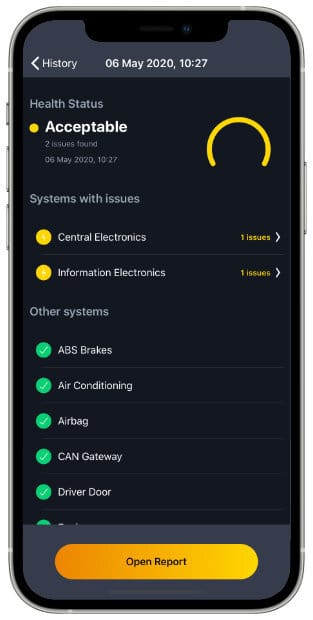
As mentioned before, all this happens in fractions of a second!
Additional information on the process
Standardized and self-contained data units (data packets) are sent back and forth between the adapter and the control unit.
The crucial part of a data packet consists of the information to be sent (data bytes). In addition, there is a header with the “address” and administrative information (header bytes) and a final checksum byte.
In addition to the address, the header bytes could also contain data about the length of the following data bytes or the priority. The ELM chip in the adapter programs this data when creating the data packet.
The OBD2 standard can work with a purely functional address. The exact address is not necessary. This ensures that virtually all diagnostic devices can communicate with virtually all vehicles. If the diagnostic device or app has been optimized for a specific manufacturer, absolute addresses of the ECUs such as engine control unit or transmission control unit can also be used. This results in a significantly faster and improved analysis.
What types of diagnostic devices for Volkswagen are available?
Even though we have already told you our favorite, we still want to present you with all the possibilities of diagnostic devices for your Volkswagen.
Of course, with each type, there are good and not-so-good devices. Some can really only read out the fault codes, others at least offer the possibility to get general vehicle information, and some have a huge range of functions.
Here now are the three types of diagnostic devices:
1. External Diagnostic Devices
These are stand-alone devices that usually have a display and corresponding controls. In some cases, they may also have a touchscreen. These external diagnostic devices can be bought anywhere for as little as 30 euros. However, there are also devices for several thousand euros.
In most cases, these handheld devices only read error codes and show them in plain text on their display. With some it is also possible to delete error codes from the vehicle’s fault memory. Additional functions are rare.
Depending on the quality of the device, they connect to the OBD2 adapter via Bluetooth or Wi-Fi. However, the most traditional way is via a cable.
A really great diagnostic device in the semi-professional range is the Autel MaxiCheck MX808. It costs around $500, is a handheld tool with a color display and a wide range of functions. In addition to reading fault codes, the device can also read live data and reset service intervals, for example.
2. Computer Software
There are also pure software solutions on the market. These can be installed on the laptop and then used as a diagnostic tool. Here a connection between the laptop and the OBD2 adapter can be made via Bluetooth, Wi-Fi, or cable.
The advantage is, of course, the use of the large screen of the laptop. The disadvantage in that you always have to drag the laptop with you when you want to make a diagnosis.
Unfortunately, we can’t recommend any good software for the laptop, because we simply couldn’t find any that we were convinced of. We also think that the use of software with a laptop is very impractical for the diagnosis. You are always dependent on the computer. If you don’t have it with you, you can’t perform diagnostics.
2. OBD2 scanner with a mobile app
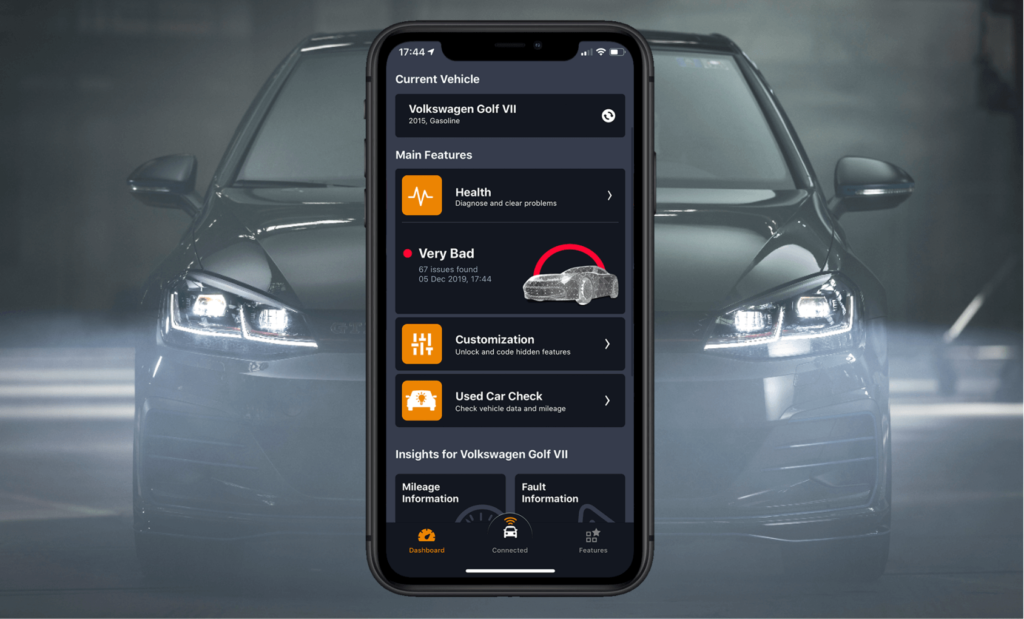
An app uses the computing power of a cell phone so that you don’t need a separate device. Diagnostic apps for smartphones have developed rapidly in recent years. Without a doubt, the immense advantages are mobility (you almost always have your cell phone with you), operation (apps can usually be used intuitively), and the range of functions (because most apps can do more than just diagnosis).
In the next chapter, we’ll explain why we chose the Carly app as the winner.
Generalist or Specialist
With all types of diagnostic devices, there are generalists and specialists. The generalists can diagnose all vehicle brands. However, they can then only read the standard codes and not the manufacturer-specific fault codes.
Only the specialists -— say an app for VW — can also read the codes that come specifically from VW. After all, there are tens of thousands of codes. So you’ll have to decide what’s more important to you in most cases. If you want to diagnose only one type of vehicle, you can choose a specialist. If you want to use the device on several different vehicles, then you need a generalist.
Our winner: the Carly app
We’ve already said it, for us, the Carly app is simply the best diagnostic tool on the market. The decisive factors in our decision were the reliability and the huge range of functions. In addition to diagnostics, the app can do much more. We’ll briefly introduce you to the other functions here.
Coding for Volkswagen
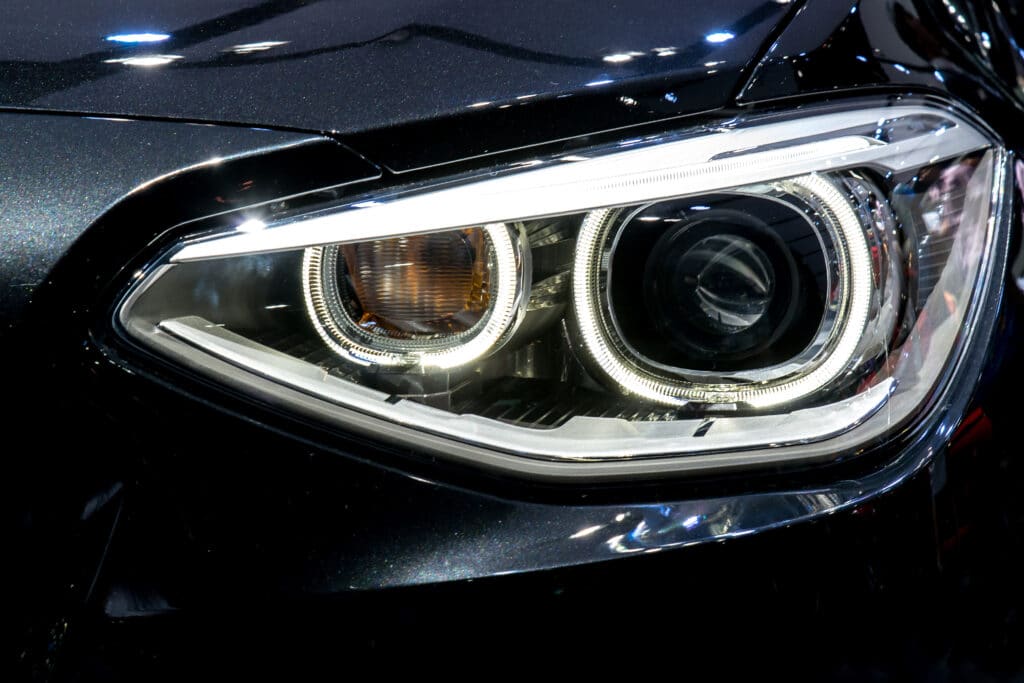
The ability to code with Carly is key. No other type of diagnostic device can do this, only apps.
Coding is essentially the personalization of the vehicle. You adjust the settings according to your preferences. Set which lights should come on during emergency braking or adjust the brightness of the dashboard lights.
Depending on the vehicle, you can set whether the power windows should continue to run even when a door is opened. You can specify how the automatic Start-Stop should work or what the intervals of the windshield wipers should be. Coding is easy with the Carly app and you don’t have to be a technician to have fun with it.
Live Data
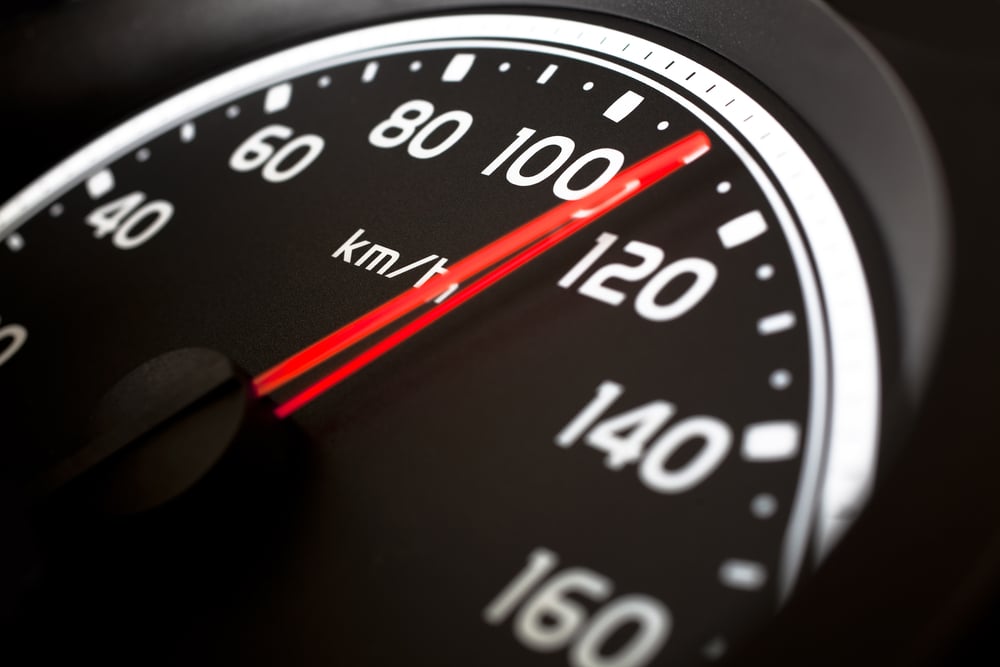
Let the app show you the values of your VW in real-time while driving. You’ll get to know the vehicle better and gain a deeper insight into how it works. You can also analyze and optimize fuel consumption in different situations.
You can also see the engine revolutions per minute or temperature and pressure values.
Emissions Check
Before an Emissions Check is due, you can put all emissions-relevant systems through their paces and therefore identify potential problems in advance. This can save you from failing the inspection later on. You can also change the oil yourself and adjust the service interval in the vehicle accordingly.
Used Car Check
One function that is absolutely unique for the Carly app is the used car check. Did you know that around 450,000 sold cards in the U.S.A have had their speedometer tampered in order to price it higher?
Luckily, the mileage is not only stored in the speedometer, but also in many other control units. So before you buy a used car, you should connect Carly to the vehicle.
The app checks all relevant systems and control units and points out possible inconsistencies. That way, you’ll never get ripped off. And if the seller doesn’t allow you to connect the app, then you should probably avoid buying it.
Best diagnostic device for Volkswagen
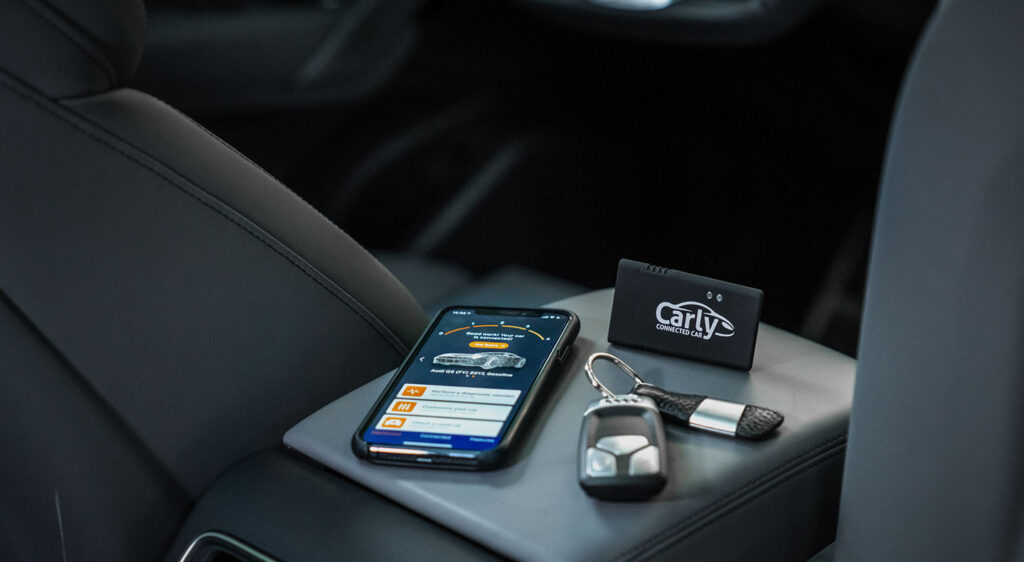
There are basically three different types of diagnostic devices for Volkswagen on the market. From our point of view, an app is the best choice. It is always up-to-date, user-friendly, easy to carry around, and offers many other functions. We think the Carly app is simply the best on the market currently. It has a variety of functions, is intuitive to use, and is offered at an unbeatable price. Not only can it read fault codes and give you an overview of the vehicle’s health, but it can also code, retrieve real-time data, do a used car check, and much more.

